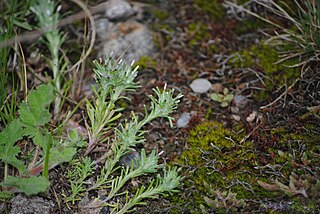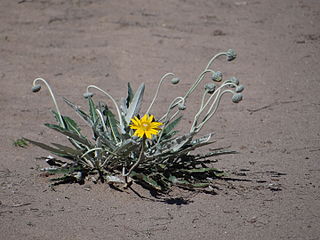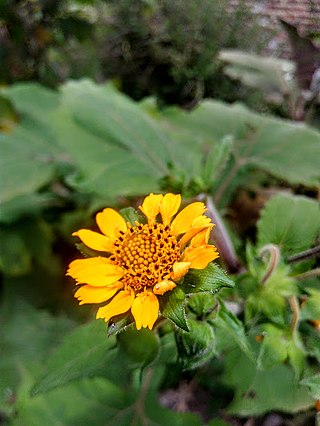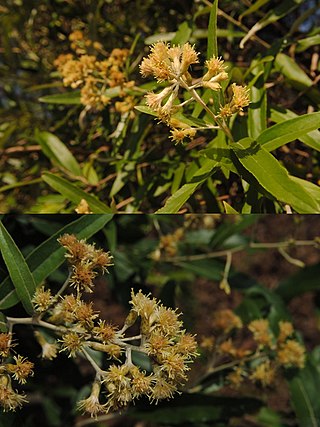
The vicuña or vicuna is one of the two wild South American camelids, which live in the high alpine areas of the Andes, the other being the guanaco, which lives at lower elevations. Vicuñas are relatives of the llama, and are now believed to be the wild ancestor of domesticated alpacas, which are raised for their coats. Vicuñas produce small amounts of extremely fine wool, which is very expensive because the animal can only be shorn every three years and has to be caught from the wild. When knitted together, the product of the vicuña's wool is very soft and warm. The Inca valued vicuñas highly for their wool, and it was against the law for anyone but royalty to wear vicuña garments; today, the vicuña is the national animal of Peru and appears on the Peruvian coat of arms.

Schinus is a genus of flowering trees and tall shrubs in the sumac family, Anacardiaceae. Members of the genus are commonly known as pepper trees. The Peruvian pepper tree is the source of the spice known as pink peppercorn.

Grindelia (gumweed) is a genus of plants native to the Americas belonging to the family Asteraceae. The genus was named for Latvian botanist David Hieronymus Grindel, 1776–1836.

Ophryosporus is a genus of South American flowering plants in the tribe Eupatorieae within the family Asteraceae.

Cypella is a genus of herbaceous, perennial and bulbous plants in the family Iridaceae. It is distributed in South America, from Peru and Brazil to Northern Argentina. The genus name is likely derived from the Greek word kyphella, meaning "hollow of the ear", and alludes to the shape of the inner tepals.

Facelis (trampweed) is a genus of South American flowering plants in the family Asteraceae.

Trichocline is a genus of Australian and South American plants in the tribe Mutisieae within the family Asteraceae. It consists of one species from Australia (T. spathulata) and twenty-three from South America.

Hymenostephium is a genus of flowering plants in the family Asteraceae. It includes herbs and slender shrubs that occur from Mexico through to Venezuela and north-western Argentina.

Smallanthus is a genus of flowering plants in the tribe Millerieae within the family Asteraceae.

Microliabum is a genus of South American flowering plants in the family Asteraceae.
Mniodes is a genus of South American flowering plants in the tribe Gnaphalieae within the family Asteraceae.

Parastrephia is a genus of South American plants in the tribe Astereae within the family Asteraceae.
Plazia is a genus of South American plants in the family Asteraceae.

Proustia is a genus of flowering plants in the family Asteraceae, native to South America and the West Indies.
Aphyllocladus is a genus of flowering plants in the family Asteraceae.

Gamochaeta is a genus of flowering plants in the family Asteraceae. There has not always been agreement among botanists regarding its status as a recognized genus, but it has become more accepted in recent years. It currently includes many plants that previously belonged in genus Gnaphalium. Like many species of Gnaphalium, many Gamochaeta are called cudweeds or everlastings.
Henry Hurd Rusby (1855–1940) was an American botanist, pharmacist and explorer. He discovered several new species of plants and played a significant role in founding the New York Botanical Garden and developing research and exploration programs at the institution. He helped to establish the field of economic botany, and left a collection of research and published works in botany and pharmacology.
Tagetes pusilla, the lesser marigold, is a Latin American species of marigolds in the family Asteraceae. It is native Central America and western South America from Guatemala to northern Argentina.

Moquiniastrum is a genus of flowering plants belonging to the family Asteraceae.
Lomanthus is a genus of flowering plant in the family Asteraceae, with species native to northwestern Argentina, Bolivia, Ecuador and Peru. The genus was established in 2009. It was segregated from Senecio on the basis of morphological and molecular phylogenetic evidence. It is placed in the tribe Senecioneae.













